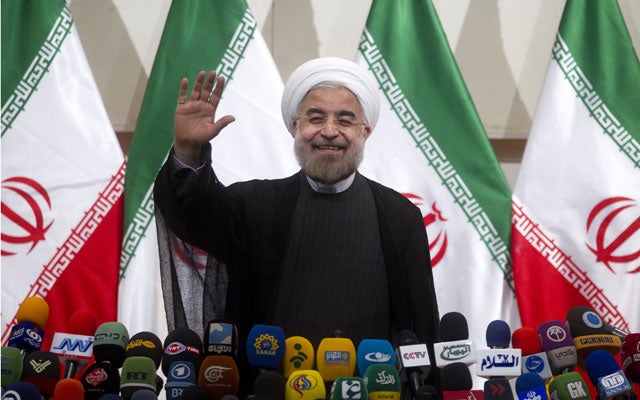Too many in Washington seem to regard the P5+1 nuclear deal with Iran as an episode of the once-popular TV show 24. They think the clock starts counting down on January 20, and then we’ll wait breathlessly for six months to find out whether the West has successfully sidetracked Iran’s nuclear-weapons program.
That might happen in Hollywood. But in the real world, six months from now no one will be the slightest bit more confident that Iran’s nuclear ambitions have been jettisoned.
If pressed, the White House might even admit that is true. But they will maintain that the temporizing P5+1 deal is intended mainly as a trust- and confidence-building measure. If Tehran lives up to its commitment, it will demonstrate that the regime is ready to take the next step back from nukes. If the Iranians fail to deliver, the West will go back to tightening the economic screws.
But that answer can be nothing but cold comfort to those who believe a nuclear-armed Iran really is unacceptable.
First, in the P5+1, the U.S. has already negotiated away its strongest leverage on the regime (the economic sanctions). The preemptive giveaway makes it less — not more — likely that the West will get an ironclad deal in six months. What is more likely is that Tehran will have set us up for another round of “rope-a-dope” bargaining — either stringing out negotiations even longer, or walking away as they blame the U.S. for being unreasonable.
Second, the White House knows that cracks in the sanctions regime might prove to be irreparable. Tehran will continue to find ways to bring in enough hard currency to keep the regime in comfort, even if it is not enough dough to revive Iran’s anemic economy.
It is understandable why the administration leapt at this deal. The president’s foreign policy is in tatters on every front. Nowhere does it look like more of a disaster than in the Middle East. Desperate to latch onto something that might suggest it has not lost completely its capacity to influence affairs, the Oval Office grabbed this deal, which offers a six-month reprieve from having to deal foursquare with the problem of Iran’s nuclear program.
There may even be delusional forces in the administration that believe a rapprochement with Iran is possible. Accept this magical thought, and it’s possible to dream of a friendly Iran helping to cure any number of difficult problems, from the meltdown in Iraq, to the civil war in Syria, to extricating the U.S. from Afghanistan without having that country fall into the hands of Islamists.
Indeed, some individuals in the administration may see the deal as their shot at a Nobel Peace Prize of their own.
But it’s all just fairy-dust foreign policy if Tehran is committed to having anything more than ‘just” a civil nuclear program. And the regime has given no indication that it would limit itself to such a program.
Worse, the White House seems to have no real plan B. It has already called congressional efforts to draft even tougher sanctions “warmongering.” Now, the president well knows there is virtually no chance that a tough sanctions bill will get out of Congress; Senate majority leader Harry Reid will make sure of that. And, even if a bill somehow snuck through, the president could simply veto it. So why has the White House cranked up the rhetoric? It seems desperate to rule out of bounds any suggestion that its Iran policy might fail.
Unfortunately, failure is the most likely outcome of the P5+1 charade. It might not be dramatically apparent when the clock runs out in six months. But those monitoring the nuclear clock in the Middle East know that the real issue is whether or not Iran can be dissuaded from becoming a nuclear power. And six months from now, P5+1 will have brought us no closer to answering that question.
— James Jay Carafano is vice president for defense and foreign-policy studies at the Heritage Foundation. This piece originally appeared in National Review Online.
